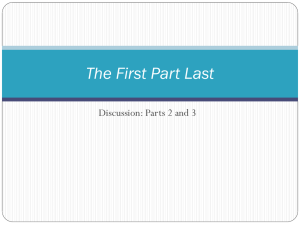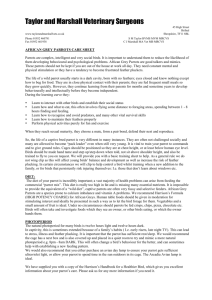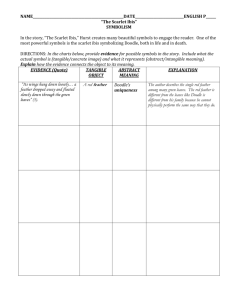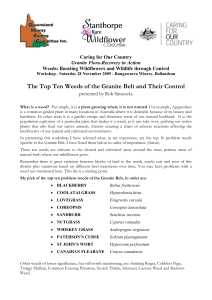Article 108 BioControl 8 - Botanical Society of South Africa
advertisement
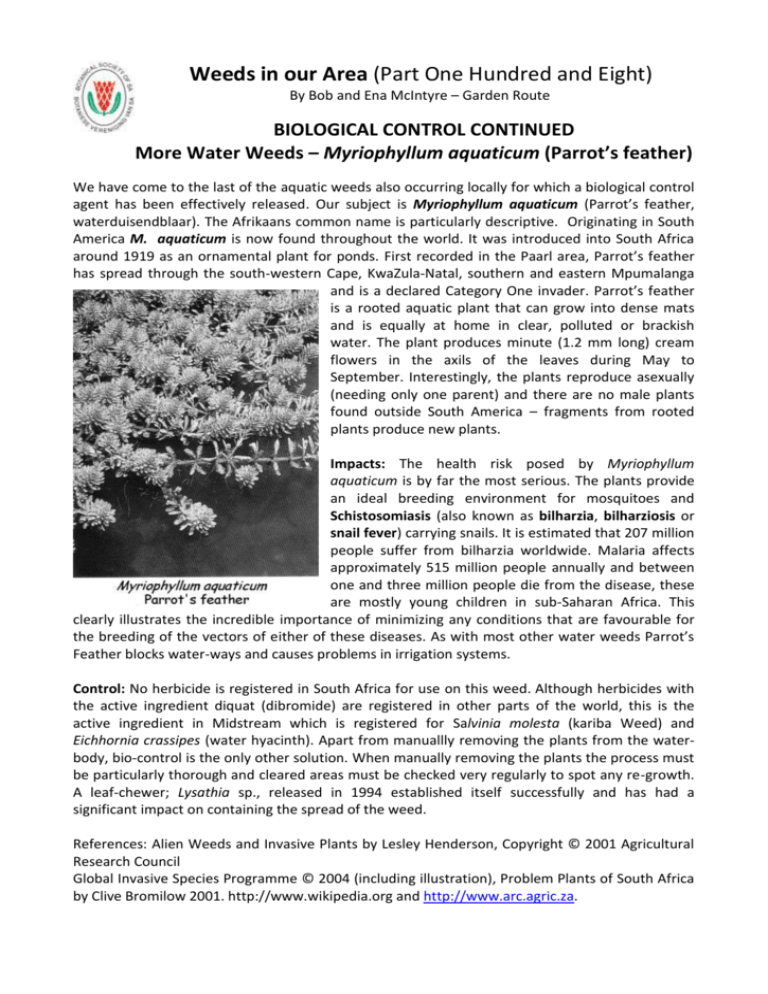
Weeds in our Area (Part One Hundred and Eight) By Bob and Ena McIntyre – Garden Route BIOLOGICAL CONTROL CONTINUED More Water Weeds – Myriophyllum aquaticum (Parrot’s feather) We have come to the last of the aquatic weeds also occurring locally for which a biological control agent has been effectively released. Our subject is Myriophyllum aquaticum (Parrot’s feather, waterduisendblaar). The Afrikaans common name is particularly descriptive. Originating in South America M. aquaticum is now found throughout the world. It was introduced into South Africa around 1919 as an ornamental plant for ponds. First recorded in the Paarl area, Parrot’s feather has spread through the south-western Cape, KwaZula-Natal, southern and eastern Mpumalanga and is a declared Category One invader. Parrot’s feather is a rooted aquatic plant that can grow into dense mats and is equally at home in clear, polluted or brackish water. The plant produces minute (1.2 mm long) cream flowers in the axils of the leaves during May to September. Interestingly, the plants reproduce asexually (needing only one parent) and there are no male plants found outside South America – fragments from rooted plants produce new plants. Impacts: The health risk posed by Myriophyllum aquaticum is by far the most serious. The plants provide an ideal breeding environment for mosquitoes and Schistosomiasis (also known as bilharzia, bilharziosis or snail fever) carrying snails. It is estimated that 207 million people suffer from bilharzia worldwide. Malaria affects approximately 515 million people annually and between one and three million people die from the disease, these are mostly young children in sub-Saharan Africa. This clearly illustrates the incredible importance of minimizing any conditions that are favourable for the breeding of the vectors of either of these diseases. As with most other water weeds Parrot’s Feather blocks water-ways and causes problems in irrigation systems. Control: No herbicide is registered in South Africa for use on this weed. Although herbicides with the active ingredient diquat (dibromide) are registered in other parts of the world, this is the active ingredient in Midstream which is registered for Salvinia molesta (kariba Weed) and Eichhornia crassipes (water hyacinth). Apart from manuallly removing the plants from the waterbody, bio-control is the only other solution. When manually removing the plants the process must be particularly thorough and cleared areas must be checked very regularly to spot any re-growth. A leaf-chewer; Lysathia sp., released in 1994 established itself successfully and has had a significant impact on containing the spread of the weed. References: Alien Weeds and Invasive Plants by Lesley Henderson, Copyright © 2001 Agricultural Research Council Global Invasive Species Programme © 2004 (including illustration), Problem Plants of South Africa by Clive Bromilow 2001. http://www.wikipedia.org and http://www.arc.agric.za.


